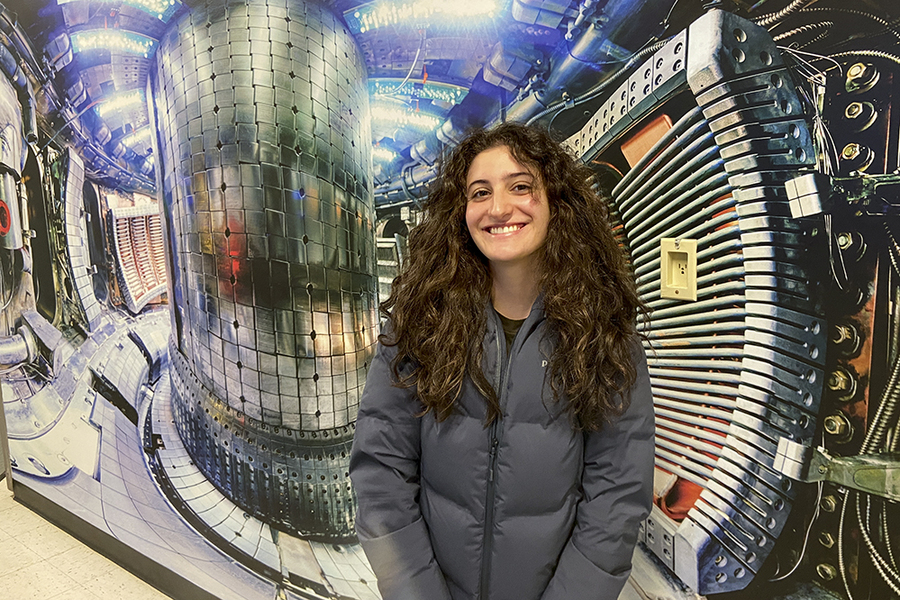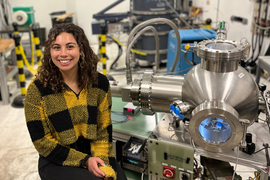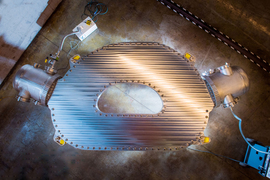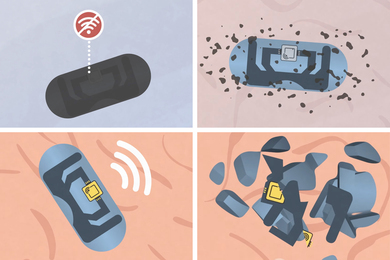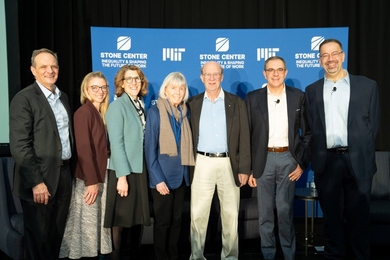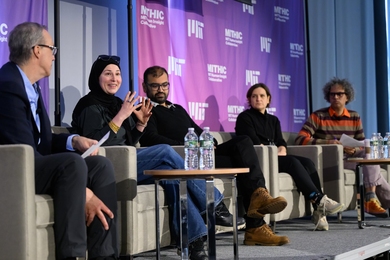When high school senior Tuba Balta emailed MIT Plasma Science and Fusion Center (PSFC) Director Dennis Whyte in February, she was not certain she would get a response. As part of her final semester at BASIS Charter School, in Washington, she had been searching unsuccessfully for someone to sponsor an internship in fusion energy, a topic that had recently begun to fascinate her because “it’s not figured out yet.” Time was running out if she was to include the internship as part of her senior project.
“I never say ‘no’ to a student,” says Whyte, who felt she could provide a youthful perspective on communicating the science of fusion to the general public.
Posters explaining the basics of fusion science were being considered for the walls of a PSFC lounge area, a space used to welcome visitors who might not know much about the center’s focus: What is fusion? What is plasma? What is magnetic confinement fusion? What is a tokamak?
Why couldn’t Balta be tasked with coming up with text for these posters, written specifically to be understandable, even intriguing, to her peers?
Meeting the team
Although most of the internship would be virtual, Balta visited MIT to meet Whyte and others who would guide her progress. A tour of the center showed her the past and future of the PSFC, one lab area revealing on her left the remains of the decades-long Alcator C-Mod tokamak and on her right the testing area for new superconducting magnets crucial to SPARC, designed in collaboration with MIT spinoff Commonwealth Fusion Systems.
With Whyte, graduate student Rachel Bielajew, and Outreach Coordinator Paul Rivenberg guiding her content and style, Balta focused on one of eight posters each week. Her school also required her to keep a weekly blog of her progress, detailing what she was learning in the process of creating the posters.
Finding her voice
Balta admits that she was not looking forward to this part of the school assignment. But she decided to have fun with it, adopting an enthusiastic and conversational tone, as if she were sitting with friends around a lunch table. Each week, she was able to work out what she was composing for her posters and her final project by trying it out on her friends in the blog.
Her posts won praise from her schoolmates for their clarity, as when in Week 3 she explained the concept of turbulence as it relates to fusion research, sending her readers to their kitchen faucets to experiment with the pressure and velocity of running tap water.
The voice she found through her blog served her well during her final presentation about fusion at a school expo for classmates, parents, and the general public.
“Most people are intimidated by the topic, which they shouldn't be,” says Balta. “And it just made me happy to help other people understand it.”
Her favorite part of the internship? “Getting to talk to people whose papers I was reading and ask them questions. Because when it comes to fusion, you can’t just look it up on Google.”
Awaiting her first year at the University of Chicago, Balta reflects on the team spirit she experienced in communicating with researchers at the PSFC.
“I think that was one of my big takeaways,” she says, “that you have to work together. And you should, because you're always going to be missing some piece of information; but there's always going to be somebody else who has that piece, and we can all help each other out.”
